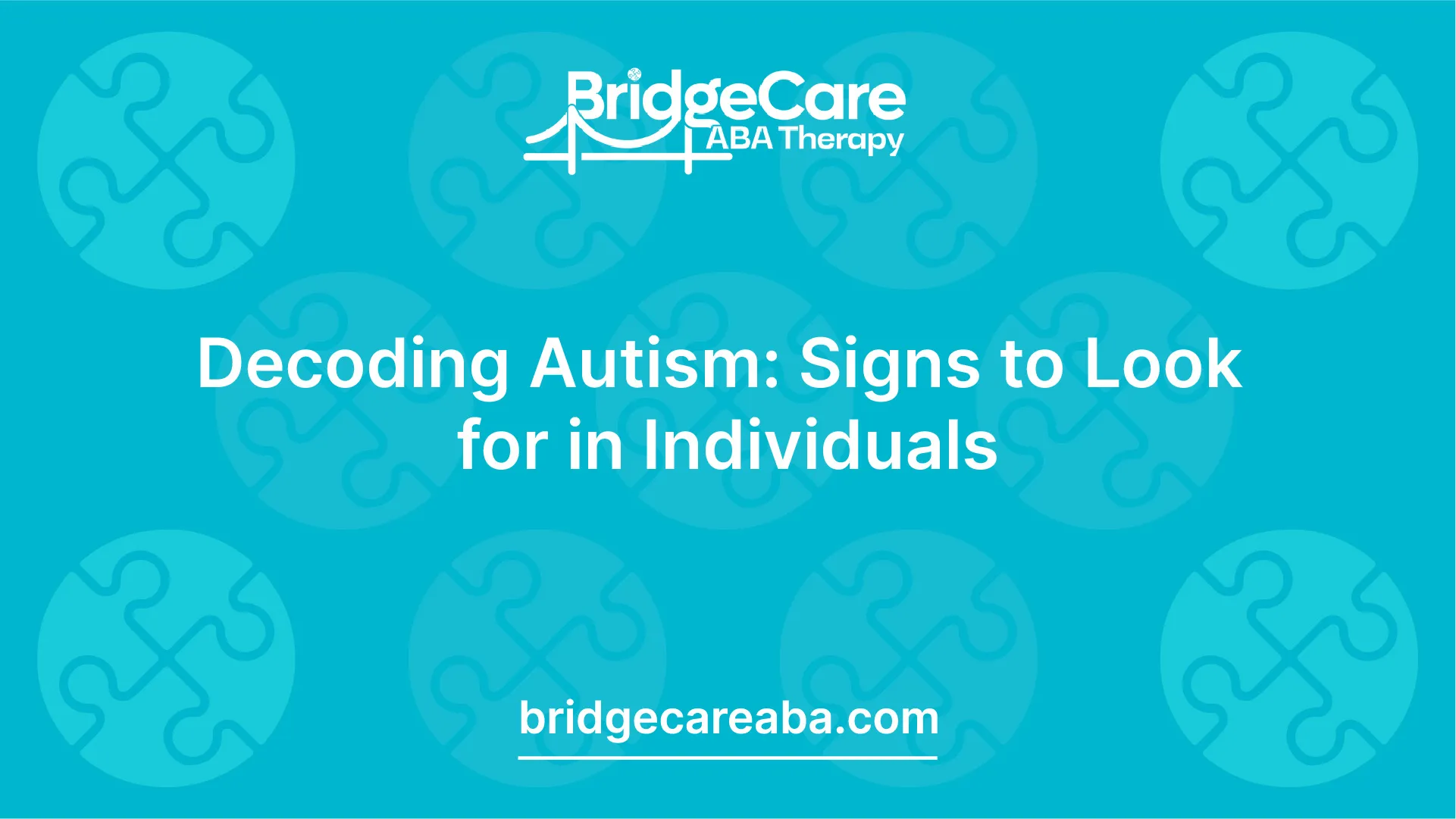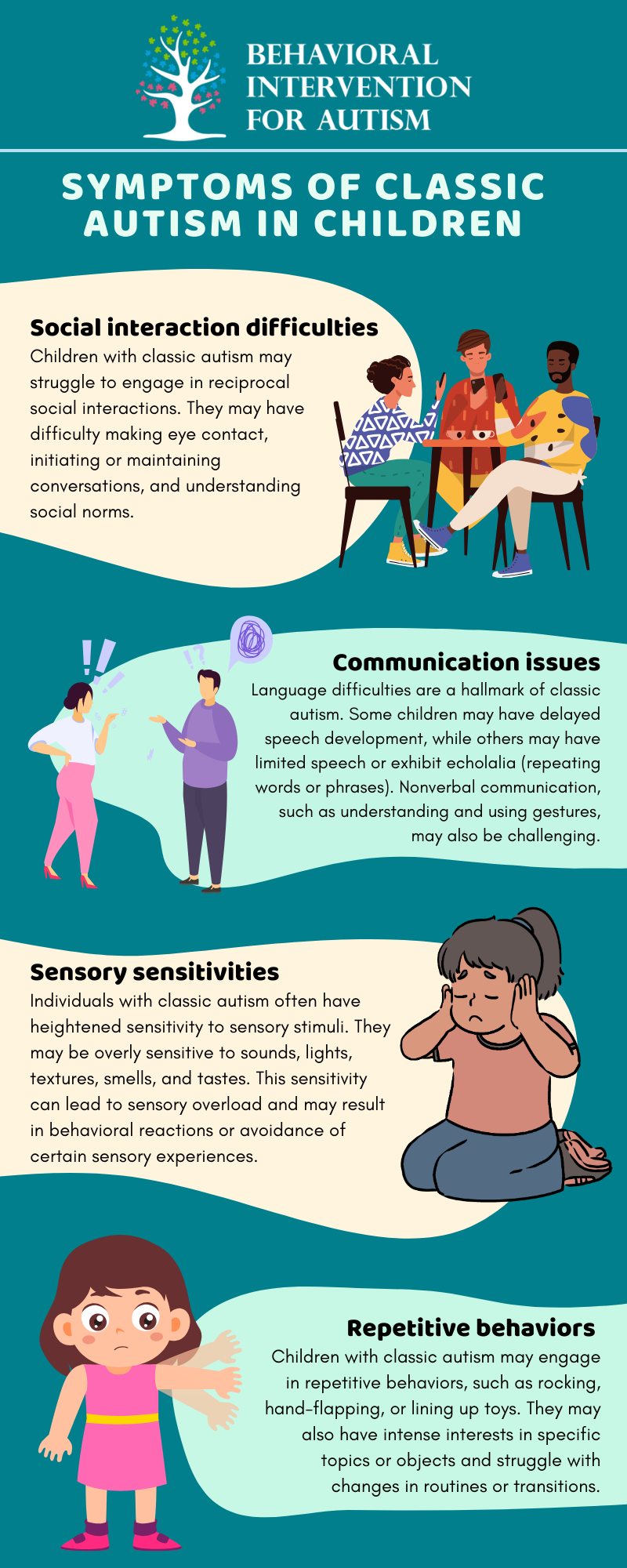Recognizing the Influence of Behavioral Autism on Daily Life and Social Communications
You might not understand just how deeply behavioral autism affects every day life and social interactions. People on the range frequently navigate a world filled with interaction difficulties and sensory overload. These difficulties can cause stress and seclusion, affecting their connections and overall health. Comprehending these nuances is essential for cultivating helpful environments. What techniques can we implement to develop more meaningful links and inclusive spaces? The responses might amaze you.
Specifying Behavior Autism and Its Qualities
Behavioral autism, often described as autism spectrum condition (ASD), incorporates a variety of problems identified by challenges in social interaction, communication, and repetitive habits. You might see that people with ASD often battle to translate social hints, which can bring about misunderstandings in discussions. They might discover it difficult to develop eye contact or participate in small talk, making social circumstances really feel overwhelming.
Interaction troubles can manifest in various means, from delayed speech advancement to a choice for using fewer words. Repeated habits, such as hand-flapping or shaking, can work as coping mechanisms to take care of anxiety or sensory overload. These features can profoundly impact everyday life, making it important for you to recognize and support those with ASD. By recognizing these characteristics, you can cultivate a setting that advertises approval and urges reliable interaction, helping individuals with autism flourish in their everyday interactions.
The Range of Autism: Comprehending Irregularity in Behavior
Autism spectrum disorder (ASD) isn't a one-size-fits-all diagnosis; it differs extensively among individuals. You might notice that some people with ASD exhibit mild symptoms, while others might encounter extra substantial difficulties. This variability can materialize in habits, interests, and sensory sensitivities. You might come across people who are very verbal and engage easily in conversations, while others could like solitary activities or communicate non-verbally.
Additionally, the means individuals with ASD react to sensory input can vary greatly; some could be overwhelmed by intense lights or loud noises, whereas others grow in stimulating settings. The spectrum additionally consists of differences in social interactions; some people may battle to analyze social hints, while others navigate social settings with loved one ease. Comprehending this irregularity is necessary, as it helps you value each person's distinct experience and dressmaker assistance to their certain needs, promoting an extra inclusive atmosphere for every person.
Communication Difficulties Dealt With by Individuals With Autism
When you interact with individuals on the autism spectrum, you may see their special interaction challenges. They usually face problems with both nonverbal and spoken cues, which can affect their social communications. Understanding these barriers is vital for cultivating better links and support.

Verbal Communication Problems
Many people on the autism range experience spoken communication troubles that can significantly impact their day-to-day interactions. Your quantity, tone, or rate may not line up with social expectations, creating others to misinterpret your intentions. Identifying these challenges can assist you and your support network develop approaches to enhance communication and foster far better connections with others in your everyday life.
Nonverbal Communication Obstacles
Verbal interaction isn't the only difficulty individuals on the autism range face; nonverbal communication obstacles can be equally as significant. You might discover it difficult to translate body movement, faces, and eye contact, which are essential for efficient communication. These difficulties can lead to misunderstandings or misinterpretations of social signs, making interactions feel overwhelming or complicated. You might have a hard time to share your very own emotions via nonverbal ways, leaving others unsure of your sensations or objectives. This separate can create feelings of isolation and disappointment. Recognizing these barriers is important for cultivating understanding and compassion in your communications. By addressing nonverbal interaction, you can discover approaches to improve your social experiences and enhance your overall high quality of life.
Social Communication Effects
Social communications can commonly feel frustrating due to the special communication difficulties faced by people with autism. Identifying these difficulties can help you locate methods to improve communication, such as exercising social skills in secure settings or making use of aesthetic aids. Comprehending your needs allows you to navigate social communications with greater confidence and simplicity.
Social Interaction and Connection Structure in Autism
While structure relationships can be testing for individuals with autism, recognizing their special perspectives and communication styles can promote purposeful connections. You might observe that several people on the range choose straight communication and might fight with social signs or tiny talk. By being simple in your interactions, you can aid develop an environment where they feel comfortable.
Engaging in shared rate of interests can additionally offer as a bridge to much deeper connections. Whether it's a leisure activity, a favorite program, or a mutual interest, these common threads can open up doors to relationship.
Day-to-day Live Routine: Navigating Challenges and Strategies
Steering everyday life routines can be particularly challenging for people with autism, specifically when unanticipated changes take place. You might find convenience in having an organized routine, as it helps you anticipate what's next. It's regular to feel nervous or overloaded when disturbances occur. To browse these difficulties, take into consideration applying visual timetables or lists. These tools can provide clearness and reassurance.
Establishing a routine that consists of sensory breaks can also be advantageous. click over here You can intend brief breaks throughout your day to charge. It's vital to communicate with those around you, allowing them know your requirements and preferences. This aids develop an understanding setting.
Finally, method mindfulness techniques to manage stress and anxiety and anxiety. Basic breathing workouts or grounding methods can make a significant difference. By incorporating these approaches, you can boost your daily routine and lessen disturbances, making life really feel more manageable.
Strengths and Capabilities of People on the Autism Spectrum
Comprehending day-to-day life regimens is simply one aspect of the autism experience. Many individuals on the autism spectrum possess remarkable staminas and capabilities that establish them apart. You might find that your interest to information is remarkable, enabling you to master jobs that call for precision and emphasis. Your capacity to believe outside the box can cause innovative services in numerous circumstances.
Moreover, your memory skills usually radiate, especially in areas of rate of interest. Aba Therapist. This knack for keeping details can make you a valuable resource in areas like scientific research, innovation, or art. You may likewise display strong aesthetic thinking, allowing you to envision complex principles and fix issues creatively
In addition, your special viewpoint on the world can promote empathy and understanding in others, improving social interactions. Embracing these toughness not just improves your confidence yet also aids others appreciate look at this now the varied talents you offer the table.
Producing Inclusive Environments for People With Autism
Creating inclusive settings for individuals with autism begins with creating sensory-friendly spaces that satisfy their unique requirements. You can also cultivate chances for social interaction, assisting to develop links and friendships. By making these adjustments, you'll add to a more welcoming ambience for everyone.
Designing Sensory-Friendly Spaces
While making sensory-friendly areas, it's vital to assess the special requirements of people with autism. Start by picking calming shades and soft lights to produce a relaxing setting. When bewildered, incorporate peaceful areas where people can retreat and charge. You'll desire to minimize loud noises and disturbances, using soundproof materials or white sound devices to help preserve serenity. Think about responsive components like soft materials or fidget-friendly items that can supply convenience. Ascertain that rooms are flexible, enabling very easy reformation to fit various tasks. Finally, consist of aesthetic schedules or clear signs to assist people navigate the space with confidence. By attentively incorporating these aspects, you can produce an inviting ambience that supports sensory needs and promotes total health.
Promoting Social Communication Opportunities
Designing sensory-friendly spaces not just addresses specific comfort yet also establishes the phase for purposeful social communications among individuals with autism. To advertise these interactions, create inclusive settings that invite engagement. Arrange structured activities, like art courses or group video games, that encourage partnership without overwhelming sensory input. Usage visual help and clear communication to aid every person engage conveniently. Encourage peer mentoring, coupling individuals with autism with encouraging peers who can lead them with social scenarios. Furthermore, consider holding regular neighborhood occasions that celebrate neurodiversity, fostering acceptance and understanding among all individuals. By executing these approaches, you can enhance social possibilities, helping individuals with autism build friendships and strengthen their social skills in a risk-free, inviting setting.

Regularly Asked Inquiries
How Can Friends Support Someone With Behavioral Autism?
You can support a buddy with behavioral autism by holding your horses, listening actively, and valuing their boundaries. Take part in tasks they enjoy, communicate openly, and create a comfy atmosphere where they feel valued and comprehended.
What Resources Are Offered for Moms And Dads of Children With Autism?
You can discover different sources for moms and dads of youngsters with autism, consisting of support system, educational sites, and neighborhood area services. Getting in touch with other parents can likewise supply important insights and shared experiences to assist navigate obstacles.
Can Behavioral Autism Modification With Time?

Yes, behavior autism can transform in time. You could discover shifts in interaction, social skills, and habits as your youngster grows. Early treatment and assistance typically play vital functions in these developing changes.
Exactly How Do Sensory Level Of Sensitivities Affect Day-to-day Live?
Sensory sensitivities can make daily experiences frustrating. You might have a hard time with bright lights or loud noises, leading to anxiety or evasion. Finding atmospheres that suit your requirements can greatly boost your convenience and total every day life.
What Are Typical Misconceptions Concerning Behavioral Autism?
You could think behavior autism only affects communication skills, however it's more complicated. Numerous presume people do not have compassion or knowledge, which isn't real. Recognizing these misconceptions helps foster approval and assistance for those on the range.
Behavioral autism, frequently referred to as autism spectrum disorder (ASD), encompasses Your Domain Name a range of conditions characterized by obstacles in social interaction, communication, and repetitive behaviors.Social interactions can frequently feel overwhelming due to the distinct communication challenges faced by individuals with autism.Creating sensory-friendly rooms not only addresses private comfort yet likewise sets the stage for meaningful social communications among people with autism. Encourage peer mentoring, matching people with autism with supportive peers that can assist them through social scenarios. By implementing these approaches, you can boost social chances, assisting people with autism construct friendships and reinforce their social abilities in a secure, welcoming setting.